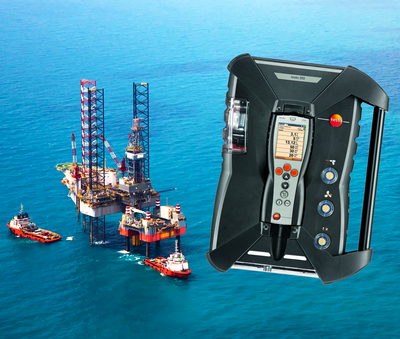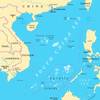Portable Emission Analyzer Certified for Marine
A portable analyzer designed for monitoring emissions from ships is now available for sale or rent from Ashtead Technology.
“With increasing global efforts to limit ship emissions, and with new regulations to reduce sulphur dioxide emissions coming into force on January 1, 2020, the addition of the Testo 350 MARITIME instrument is perfectly timed,” says Ashtead’s Environmental Sales Manager, Josh Thomas.
The Testo 350 MARITIME is the world’s first portable analyzer certified for the measurement of marine diesel engine exhaust gas emissions according to MARPOL Annexe VI and NOx Technical Code 2008. It also complies with the directive on marine equipment and has the MED mark of conformity 0098/2018.
The analyzer is able to measure a wide range of the most important gases simultaneously, including NO, NO₂, SO₂, CO, CO₂ and O₂. As such, it is ideal for the periodic on-board direct measurement of emissions, as well as after modification or adjustment of the engines. In addition, it can be employed for official monitoring measurements to check the NOx limit values prescribed in MARPOL Annexe VI, and in special regional zones relating to the NOx tax in Norway, for example.
As a semi-continuous multigas analyzer, the Testo 350 MARITIME provides a complete picture of combustion emissions. This provides an additional benefit because it can therefore be used to optimize engine performance; lowering fuel consumption and reducing greenhouse gas emissions.
Weighing just 17Kg, the instrument is supplied complete with a re-chargeable battery and gas sampling probe, and with a robust, wheeled, protective case it is easy to transport, including by aircraft.
According to the International Maritime Organisation (IMO) MARPOL convention for the prevention of pollution from ships, from January 1, 2020 the sulphur content of fuel oil used by ships shall not exceed 0.50% - which is 80% lower than the current 3.50% limit. “This will undoubtedly lower SO2 emissions,” comments Josh Thomas. “However, the situation is complicated because there are no guarantees that ship operators will be able to source low sulphur fuels, and fuels may become mixed when tanked aboard. In addition, some ships are equipped with emission scrubbers so they should be able to continue to use fuels with higher sulphur content.
“It follows therefore, that the best way to ensure that emissions are reduced is to monitor them directly, and the Testo 350 MARITIME makes that possible, in a system that can be easily transported from ship to ship.”














